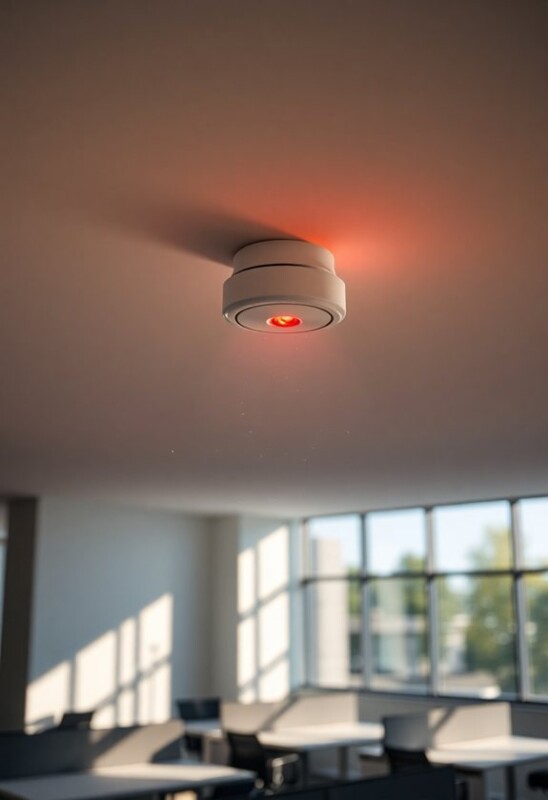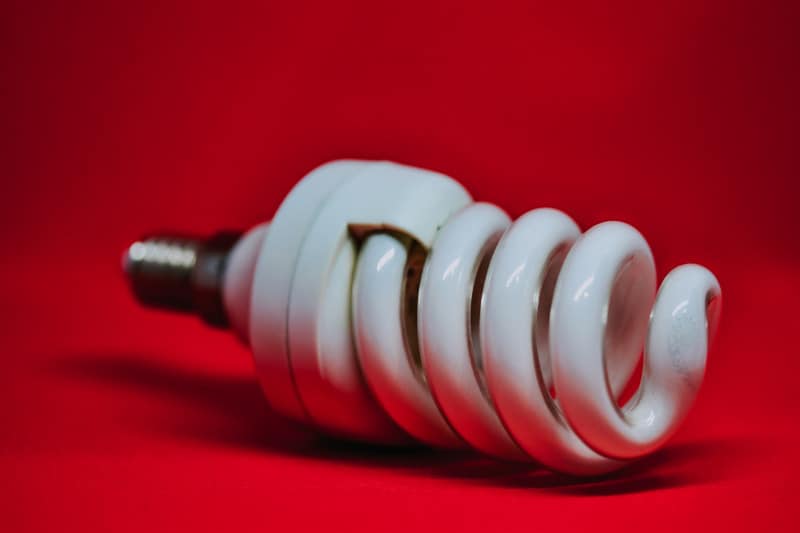Light sensors dramatically cut your energy costs by eliminating wasted illumination in unoccupied spaces. These smart systems automatically power down when no motion is detected and adjust brightness based on available natural light, reducing lighting expenses by up to 24% in commercial buildings. When integrated with LED technology and building automation, you’ll achieve 50-70% energy reductions through precise monitoring and automated controls. Uncover how sensor optimization can transform your facility’s efficiency.
Key Takeaways
- Motion sensors activate lights only when needed, eliminating energy waste from lights left on in empty spaces.
- Integration with LED technology amplifies savings, delivering up to 70% reduction in lighting energy consumption.
- Automated controls adjust brightness based on available daylight, optimizing artificial lighting use throughout the day.
- Smart sensors coordinate with building systems to create efficient lighting zones targeting high-traffic areas.
- Occupancy detection automatically powers down lights in vacant areas, reducing commercial building lighting costs by 24%.
The Science Behind Motion-Activated Lighting
Motion-activated lighting represents a sophisticated fusion of sensor technology and energy management that fundamentally transforms how we illuminate spaces.
When you install these systems, you’re deploying advanced motion detection capabilities that trigger illumination only when needed, eliminating wasteful continuous operation.
The efficiency stems from precise sensor zones that target high-traffic areas, instantly activating LED lights upon detecting movement.
You’ll benefit from the system’s automated response that eliminates human error in manual switching.
When no motion is detected, the lights automatically power down, creating an intelligent cycle that optimizes energy consumption while maintaining necessary illumination levels.
Smart Sensors and Energy Conservation
Modern sensor technologies represent a transformative approach to energy conservation, integrating sophisticated monitoring systems with automated response mechanisms.
Through smart technology integration, you’ll see substantial reductions in energy consumption across multiple domains. Energy monitoring systems with occupancy sensors cut lighting costs by 24% in commercial buildings, while smart thermostats deliver 10-15% savings on heating and cooling.
When combined with building automation systems, these sensors optimize operations by coordinating HVAC, lighting, and security functions.
You’ll benefit from real-time data analytics that enable predictive maintenance and automated adjustments, preventing energy waste and equipment failures while maximizing efficiency.
Real-World Savings With Automated Controls
Building on the proven benefits of smart sensors, automated control systems deliver quantifiable energy savings across diverse applications.
Through real-time monitoring and adaptive responses to user behavior, you’ll see significant reductions in energy consumption and operating costs.
- KNX systems cut lighting costs by 30% through presence detection and daylight harvesting
- Smart thermostats reduce HVAC expenses 10-30% by matching occupancy patterns
- Integrated building automation achieves 8-18% whole-building energy savings
The data confirms that automated controls consistently deliver measurable results across commercial, industrial, and residential settings.
While initial investments range from $100-500k, the long-term savings justify implementation for most facilities seeking energy efficiency.
Maximizing Efficiency With LED Integration
As LED technology continues to revolutionize lighting efficiency, integrating these systems with smart controls opens up unprecedented energy savings potential.
You’ll find modern LEDs achieving over 100 lumens per watt, with top performers exceeding 200 lm/W. When combined with networked lighting controls, LED performance improves dramatically, delivering 50-70% energy reductions in commercial buildings.
Lighting adaptability becomes seamless through occupancy sensors and daylight harvesting. Your system can automatically dim or brighten based on natural light levels and space utilization.
Natural Light Optimization Strategies
Natural light integration offers considerable advantages beyond LED systems, reducing reliance on artificial lighting while enhancing occupant wellbeing.
By leveraging skylight benefits and strategic window placement, you’ll enhance daylight penetration throughout your space. Clerestory windows and solar tubes provide illumination while maintaining privacy, particularly in interior zones lacking direct outdoor access.
- Install skylights and clerestory windows to capture overhead sunlight
- Position reflective surfaces opposite windows to boost natural light distribution
- Prioritize south-facing windows in northern locations for consistent daylight exposure
For best results, combine large windows with reflective elements, creating a thorough daylighting strategy that greatly reduces your dependency on artificial lighting systems.
Environmental Benefits of Sensor Technology
The integration of sensor technology delivers considerable environmental benefits across multiple domains, from energy optimization to pollution control.
You’ll find sensor sustainability practices markedly reducing your carbon footprint through automated lighting controls and HVAC optimization, directly lowering fossil fuel consumption.
Environmental monitoring systems improve workplace safety by detecting VOCs and air pollutants while ensuring water quality standards.
Smart sensors in waste management streamline recycling processes and minimize landfill impact.
Through IoT integration, you’re able to track emissions, maintain regulatory compliance, and implement proactive sustainability measures that protect both environmental resources and public health.
Return on Investment and Long-Term Value
When evaluating light sensor investments, return on investment calculations demonstrate compelling financial benefits through measurable energy savings and operational efficiencies.
Your ROI analysis reveals payback periods ranging from 1.2 to 10.7 years, depending on installation specifics and local utility rates.
- Occupancy sensors deliver 25-75% savings in private offices and meeting rooms
- Combined control strategies achieve up to 38% reduction in energy costs
- Proper commissioning nearly doubles savings in daylight harvesting systems, from 23% to 43%
Value assessment extends beyond immediate energy savings, as IoT integration enables real-time optimization while LED compatibility amplifies long-term returns through reduced maintenance needs and extended system lifespans.
Conclusion
Light sensors directly reduce your energy expenditure through automated, precision-based control systems that optimize both artificial and natural illumination. You’ll achieve 20-30% cost reduction when you integrate motion detection, daylight harvesting, and LED compatibility into your lighting infrastructure. The ROI typically materializes within 12-24 months, while the sensors continue delivering measurable savings through reduced energy consumption and extended bulb lifespan.



